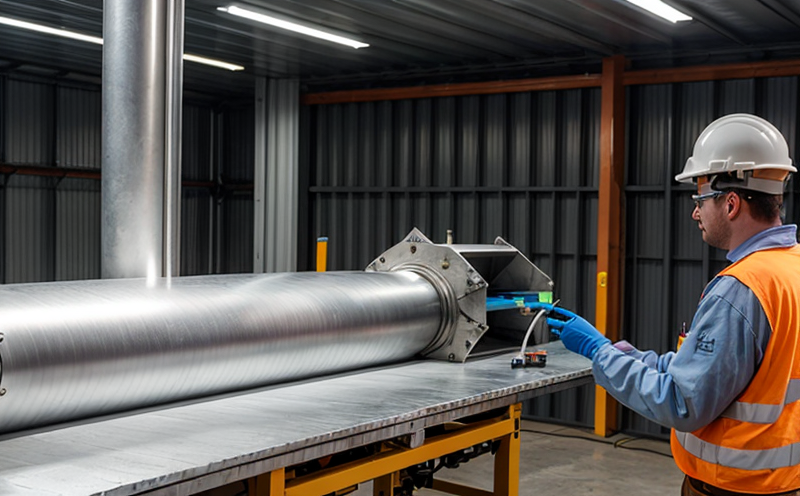ASTM G31 Immersion Corrosion Testing of Renewable Materials
The ASTM G31 immersion corrosion testing method is a critical tool in evaluating the durability and reliability of materials used in renewable energy applications. This test simulates environmental conditions that these components are likely to encounter, such as exposure to seawater or other aggressive media, to determine their resistance against corrosion.
For renewable energy applications like solar panels, wind turbines, and offshore wind farms, immersion testing is essential for ensuring the longevity of materials used in harsh environments. The ASTM G31 test specifically focuses on the performance of metallic components under immersion conditions, which are common in marine and coastal areas where these technologies operate.
The process involves immersing specimens of renewable energy materials into a controlled solution that mimics environmental exposure for extended periods. During this time, corrosion is monitored using various techniques such as weight loss measurements, visual inspection, and electrical resistance tests. This method helps identify the best-performing materials suitable for long-term use in these sectors.
Understanding the specific requirements of ASTM G31 immersion testing is crucial for quality managers, compliance officers, R&D engineers, and procurement teams working with renewable energy technologies. Proper execution ensures that tested materials meet stringent industry standards and can withstand real-world conditions without degradation.
| Applied Standards | Description |
|---|---|
| ASTM G31-18 | This standard specifies the procedure for determining the resistance to corrosion by immersion in a controlled solution. |
| ISO 9240-7:2016 | International standard that provides guidelines on accelerated seawater spray testing. |
The ASTM G31 test is widely recognized for its accuracy and reliability in predicting the performance of materials under specific environmental conditions. Compliance with these standards ensures that manufacturers can confidently use their products, knowing they have undergone rigorous testing to meet industry benchmarks.
Applied Standards
| Standard | Description |
|---|---|
| ASTM G31-18 | This standard specifies the procedure for determining the resistance to corrosion by immersion in a controlled solution. |
| ISO 9240-7:2016 | International standard that provides guidelines on accelerated seawater spray testing. |
The ASTM G31 method is complemented by other international standards such as ISO 9240, which help ensure the accuracy and consistency of immersion corrosion tests across different regions. By adhering to these standards, laboratories can provide reliable test results that are universally accepted.
Benefits
- Identifies material performance under real-world conditions.
- Promotes the use of durable and reliable materials in renewable energy applications.
- Aids in selecting appropriate materials for specific environmental exposures.
- Supports compliance with industry standards and regulations.
- Facilitates the development of more efficient and sustainable technologies.
The benefits of ASTM G31 immersion testing extend beyond mere performance metrics; it also plays a vital role in driving innovation within the renewable energy sector. By providing precise data on material resistance, this method helps manufacturers improve their product offerings, ultimately contributing to more robust and environmentally friendly solutions for the future.
International Acceptance and Recognition
The ASTM G31 immersion corrosion testing is widely recognized and accepted globally. Its reputation as a reliable standard is further bolstered by its alignment with international standards such as ISO 9240, which ensures that the test results are consistent across different regions. This recognition makes it an essential tool for industries operating in multiple countries.
Many leading companies in the renewable energy sector rely on ASTM G31 testing to ensure their products meet the highest quality and reliability standards. By incorporating this method into their quality control processes, they can confidently market their materials as proven solutions for challenging environmental conditions.





